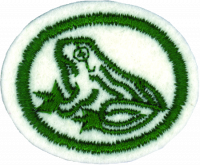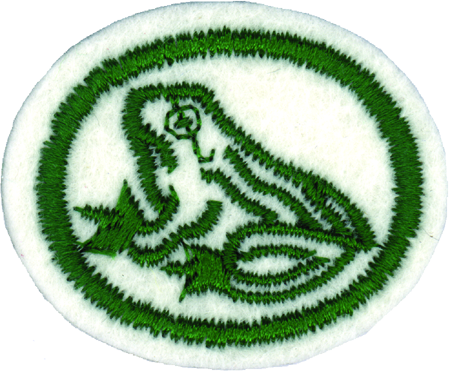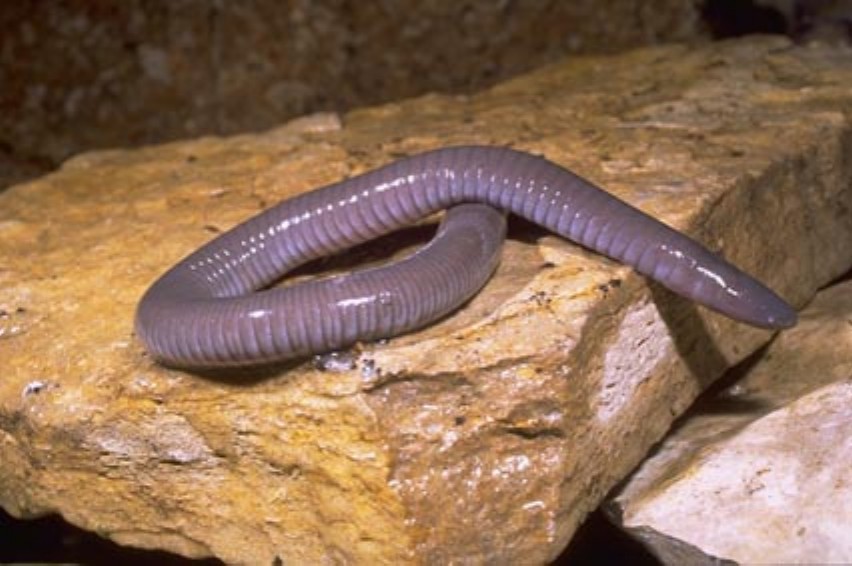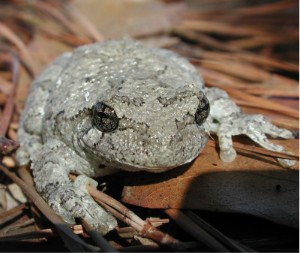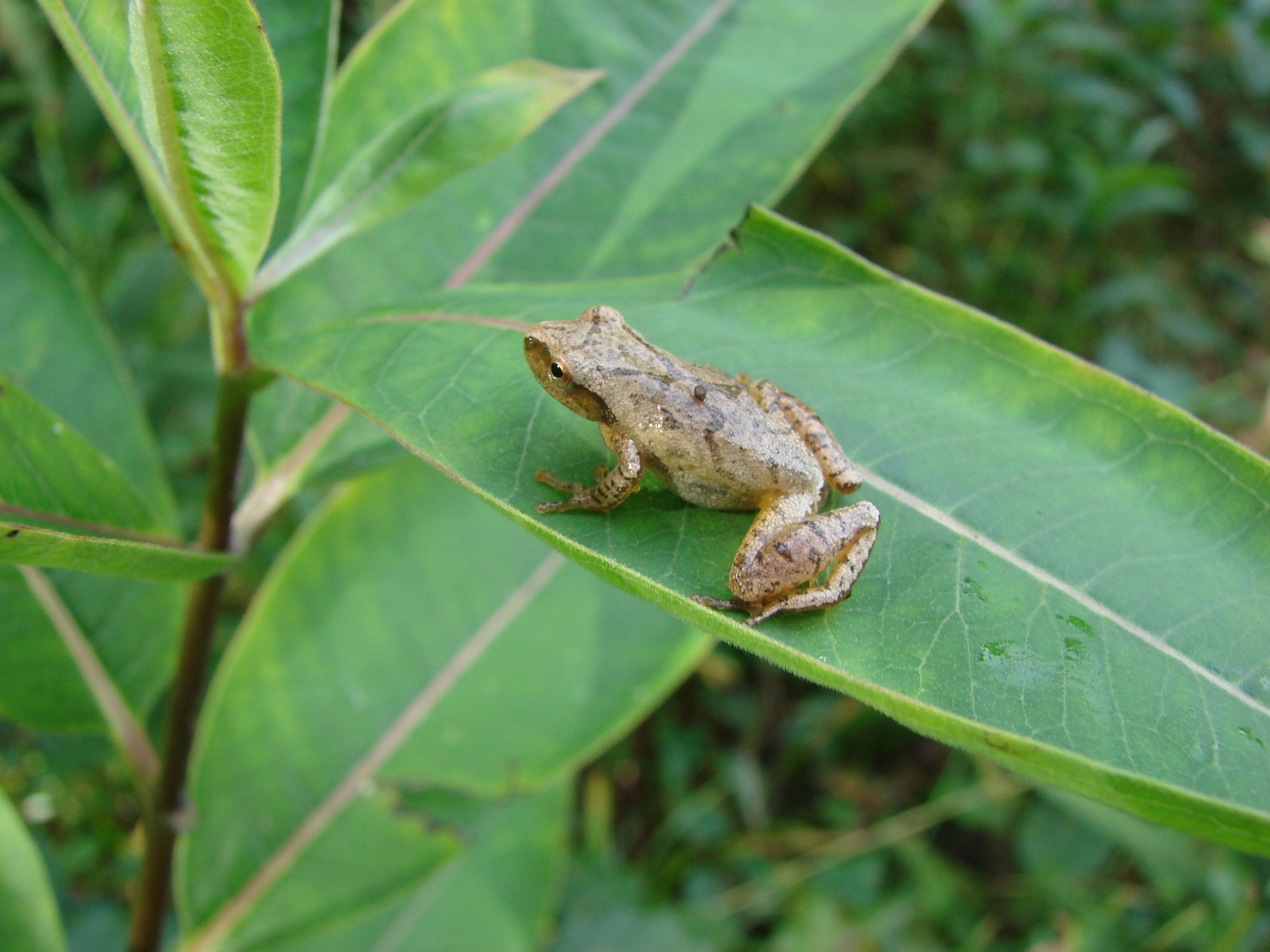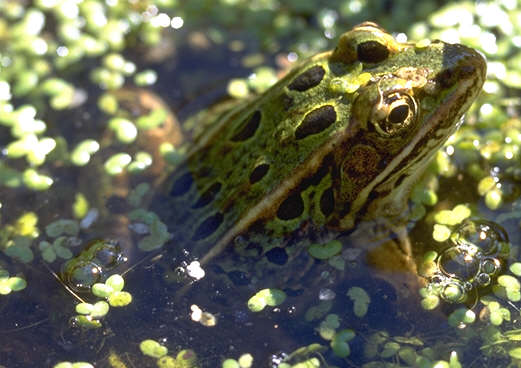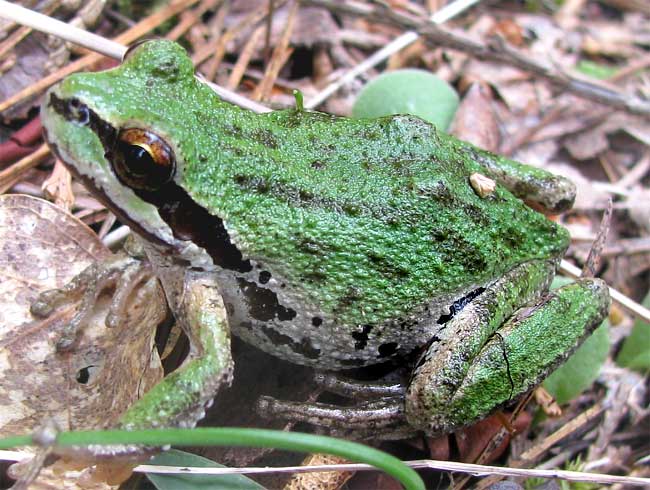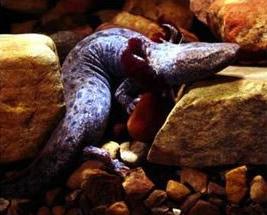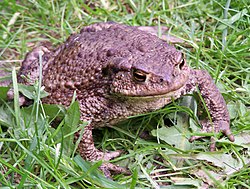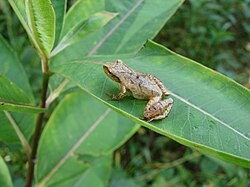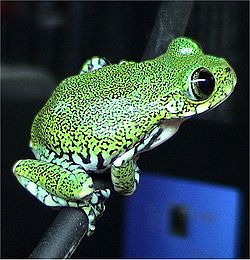Difference between revisions of "AY Honors/Amphibians/Answer Key"
Jomegat bot (talk | contribs) (Bot: Automated import of articles *** existing text overwritten ***) |
|||
| Line 1: | Line 1: | ||
| − | + | {{HonorSubpage}} | |
| − | |||
| − | |||
| − | |||
| − | {{ | ||
| − | |||
| − | |||
| − | |||
| − | |||
| − | |||
| − | |||
| − | |||
| − | |||
| − | |||
| − | |||
<section begin="Body" /> | <section begin="Body" /> | ||
{{ansreq|page={{#titleparts:{{PAGENAME}}|2|1}}|num=1}} | {{ansreq|page={{#titleparts:{{PAGENAME}}|2|1}}|num=1}} | ||
| Line 330: | Line 316: | ||
[[Category:Adventist Youth Honors Answer Book|{{SUBPAGENAME}}]] | [[Category:Adventist Youth Honors Answer Book|{{SUBPAGENAME}}]] | ||
<noinclude></translate></noinclude> | <noinclude></translate></noinclude> | ||
| − | + | {{CloseHonorPage}} | |
Revision as of 22:30, 18 March 2021
1
Amphibians live half of their lives in water and half on land. They are cold-blooded vertebrates. Amphibians are able to breathe through their skin, making them very sensitive to anything they come in contact with, including human hands. When observing amphibians, one should never touch them. Amphibians have toes rather than claws.
2
- Order Anura (frogs and toads)
- Adult frogs and toads are characterized by long hind legs, a short body, webbed digits, protruding eyes and the absence of a tail. Most have a semi-aquatic lifestyle, but move easily on land by jumping or climbing. They typically lay their eggs in puddles, ponds or lakes; and their larvae, called tadpoles, have gills and develop in water.
- Order Caudata (newts and salamanders)
- Caudata have slender bodies, short legs, and long tails. The moist skin of the amphibians fits them to habitats either near water or under some protection on moist ground, usually in a forest. Some species are aquatic throughout life, some take to the water intermittently, and some are entirely terrestrial as adults. Salamanders superficially resemble lizards, but are easily distinguished by their lack of scales. They are capable of regenerating lost limbs.
3
The use of the common names "frog" and "toad" has no taxonomic justification. From a taxonomic perspective, all members of the order Anura are frogs, but only members of the family Bufonidae are considered "true toads". The use of the term "frog" in common names usually refers to species that are aquatic or semi-aquatic with smooth or moist skins, and the term "toad" generally refers to species that tend to be terrestrial with dry, warty skin. An exception is the Fire-bellied toad (Bombina bombina): while its skin is slightly warty, it prefers a watery habitat.
4
The first line of defense for amphibians is to not be seen by a potential predator. The small size and coloration of many species help in this regard, but sometimes, rather than blending in, frogs are very brightly colored. The coloration in this case serves as a warning, for these frogs are poisonous.
Many frogs contain mild toxins that make them distasteful to potential predators. For example, all toads have large poison glands—the parotid glands—located behind the eyes on the top of the head. Some frogs, such as some poison dart frogs, are especially toxic.
Salamanders have the ability to detach their tails at will. When a predator captures a salamander by the tail, the salamander detaches its tail and escapes. The tail regenerates or grows back.
5
An internet search should find a government, or university sponsored list of amphibians in your local area. Alternatively look for an amphibian field guide that focuses on your province, state, country or region. You should define your "locality" in whatever way best matches the list you find. For example:
Amphibians by region in British Columbia Amphibians in California
Giant salamander (Cryptobranchidae)
Where found: A single species, the hellbender (Cryptobranchus alleganiensis) occurs in the eastern United States, while Asian species occur in both China and Japan. They are the largest living amphibians known today. The Japanese giant salamander (Andrias japonicus), reaches up to 1.44 m (4.7 ft), feeds on fish and crustaceans, and has been known to live for more than 50 years in captivity.[2] The Chinese giant salamander (Andrias davidianus) can reach a length of 1.8 m (5.9 ft).
Eastern newt (Notophthalmus viridescens)
Where found: common newt of eastern North America. They frequent small lakes, ponds, and streams or near-by wet forests. They can coexist in an aquatic environment with small, noncarnivorous fish, as their skin secretes a poisonous substance when the newt is threatened or injured. They have lifespans of 12 to 15 years in the wild, and may grow to five inches in length. These newts are common aquarium pets, being either collected from the wild or purchased. The bright orange juvenile stage, which is land-dwelling, is often known as the red eft. Some sources blend the general name of the species and the red-spotted newt subspecies name into eastern red-spotted newt (although there is no "western" one).
Caecilians (Gymnophiona)
Where found: Caecilians are found in wet tropical regions of Southeast Asia, India and Sri Lanka, parts of East and West Africa, the Seychelles islands in the Indian Ocean and in northern and eastern South America.
Description: Caecilians completely lack limbs, making the smaller species resemble worms, while the larger species with lengths up to 1.5 meters ![]() resemble snakes. The tail is short or absent. They have a strong skull, with a pointed snout used to force their way through soil or mud.[2] In most species, the number of bones in the skull are reduced and fused together, and the mouth is recessed under the head. Owing to their underground life, the eyes are small and covered by skin for protection, which has led to the misconception that they are blind. This is not strictly true, although their sight is limited to simple dark-light perception. All caecilians possess a pair of tentacles, located between their eyes and nostrils. These are probably used for a second olfactory capability, in addition to the normal sense of smell based in the nose.
resemble snakes. The tail is short or absent. They have a strong skull, with a pointed snout used to force their way through soil or mud.[2] In most species, the number of bones in the skull are reduced and fused together, and the mouth is recessed under the head. Owing to their underground life, the eyes are small and covered by skin for protection, which has led to the misconception that they are blind. This is not strictly true, although their sight is limited to simple dark-light perception. All caecilians possess a pair of tentacles, located between their eyes and nostrils. These are probably used for a second olfactory capability, in addition to the normal sense of smell based in the nose.
Bullfrog (Rana catesbeianus)
Where found: The American Bull Frog is native to North America. They are found in the United States, Canada and Mexico, east of the Rocky Mountains, but have been introduced to many other localities throughout the world. In Europe and the western U.S., measures are often taken to control its spread because it competes with, and often drives out, native species.
Description: The bull frog is a large species that has many similarities to its 'sister species' of toad, and can grow to a length of 6 inches (15 cm) with a weight of up to 1.5 lb (750 g). Females are typically larger than males. They are generally varying shades of green or brown, with dark brown, dark green, or black blotching and a yellow or white underside. Bull frogs are carnivorous and will consume almost anything that fits into their mouth which they can overpower, including insects, small mammals, fish, snakes, and even other frogs. They tend to eat more dragonflies than flies. The adult frog can live up to 13 years.
American Toad (Bufo americanus)
Where found: The American toad is a common species of toad found throughout the eastern United States and Canada.
Description: The American toad is a medium sized toad usually found in the range from 2 to over 3 1/2 inches. The color and pattern is somewhat variable. The Eastern American toad has spots that contain only one to two warts. It also has enlarged warts on the tibia or lower leg below the knee. While the belly is usually spotted, it is generally more so on the forward half (in some rare individuals there may be few or no spots).
Grey Tree Frog (Hyla versicolor)
Where found: Grey tree frogs inhabit a wide range, and can be found in most of the eastern half of the United States, as far west as central Texas. They also range into Canada in the provinces of Ontario and Manitoba, with an isolated population in New Brunswick.
Description: Grey tree frogs live primarily in trees, spending time in wooded areas, usually not far from a permanent water source. On rainy evenings they can often be found calling in or near shallow, temporary pools of water. They are nocturnal and insectivorous, consuming most any small arthropod they can catch. Mating occurs throughout the spring and summer months.
Spring Peeper (Pseudacris crucifer)
Where found: There are two subspecies of the spring peeper, the northern (P. c. crucifer) and the southern spring peeper (P. c. bartramiana). The northern is similar to the southern except for a strong dark marking on the southern frog's belly. The southern spring peeper is limited to northern Florida and southern Georgia, while the northern can be found all over the east of the USA and eastern Canada.
Description: The spring peeper is a small frog, attaining an adult size between 0.75 and 1.5 inches (up to 40mm) long. They have a dark cross on their backs roughly in the shape of an "X", though sometimes the marking may be indistinct. The color variations of the spring peeper are mostly tan, brown, olive green, or gray. Females are lighter-colored, while males are slightly smaller and usually have dark throats. Spring peepers are nocturnal frogs, so they are mostly heard but not seen. And they are especially easy to hear due to their extremely loud mating call which gives them the name "peeper".
Wood Frog (Lithobates sylvaticus)
Where found: Wood Frogs are found from northern Georgia and in isolated colonies in the central highlands in the eastern to central parts of Alabama, up through the northeastern United States, and all the way across Canada into Alaska. It is the most widely distributed frog in Alaska. They can be found from southeastern Alaska to north of the Brooks Range.
Description: Wood Frog is the common name given to Lithobates sylvaticus, previously Rana sylvatica. They are the only frogs found north of the Arctic Circle. In winter, as much as 35-45% of the frog's body may freeze, and turn to ice. Ice crystals form beneath the skin and become interspersed among the body's skeletal muscles. During the freeze the frog's breathing, blood flow, and heartbeat cease. Freezing is made possible by specialized proteins, glucose and perhaps accumulation of urea, which prevent intracellular freezing and dehydration. Wood Frogs primarily breed in ephemeral pools rather than permanent water bodies such as ponds or lakes. Adults emerge from hibernation in early spring and migrate to nearby pools. There, males chorus (a quacking sound) and mating occurs. Adult Wood Frogs spend summer months in moist woodlands, forested swamps, and bogs where they forage and maintain body moisture as surrounding environments dry out. Females' eggs are formed by late fall. By late fall or early winter, they leave forested swamps and travel to neighboring uplands to overwinter. Some may remain in moist areas to overwinter. They tend to hibernate in the upper organic layers of the soil, under leaf litter, and in close proximity to breeding pools.
Leopard Frog (Rana)
Where found: Once abundant in North America and Canada, their population has declined in recent years because of pollution and deforestation. Leopard frogs are often used as environmental indicator species because of their heightened sensitivity to chemical pollutants found in the air and water.
Description: Leopard frogs, which are also called meadow frogs and grass frogs, are a collection of so-called true frog within the genus Rana. They are commonly used as dissection specimens in biology classrooms. Leopard frogs are recognized by their green or brown coloration with distinct light-edged dark spots across the back and white underside. They also have a characteristic line of raised glandular skin extending from each eye to the groin.
Pacific Chorus Frog (Pseudacris regilla)
Where found: The Pacific Chorus Frog, formerly the Pacific Tree Frog (Hyla regilla) is a species of chorus frog native to the pacific coast of North America from Baja California in Mexico, through the states of California, Oregon, Washington (it is the Washington state frog), and into Canada and extreme southern Alaska. It ranges east into Nevada and Idaho.
Description: This is probably the most commonly heard and encountered frog in California and its call is often heard as a nighttime background sound in Hollywood movies. The Pacific tree frog can reach up to about 5 cm in length. The males are often smaller than the females. These frogs can have highly variable color on their bodies anywhere from gray, brown, tan or bright green and can even change between them. They are usually a pale or white color on their bellies. They have many variations of markings on their back and sides that are usually dark and spotty. The one identifiable mark is a dark stripe that goes over the eye from the nose to the shoulder. Their skin is covered in small bumps. They have long legs compared to their bodies and they tend to be slender. Their toes are long and are only very slightly webbed. On the end of each toe, there is a round sticky pad that is used for climbing and sticking to surfaces.
Australian Green Tree Frog (Litoria caerulea)
Where found: The Australian Green Tree Frog, simply Green Tree Frog in Australia, White's Tree Frog, or Dumpy Tree Frog (Litoria caerulea) is a species of tree frog native to Australia and New Guinea, with introduced populations in New Zealand and the United States.
Description: The Green Tree Frog can grow up to 10 centimeters (4 inches) in length. Its color depends on the temperature and color of the environment, ranging from brown to green; the ventral surface is white. The frog occasionally has small, white, irregularly shaped spots on its back, up to five millimeters in diameter, which increase in number with age.
Hellbender (Cryptobranchus alleganiensis)
Where found: The range of the Eastern Hellbender (C. a. alleganiensis) in North America extends from southwestern and south central New York, west to southern Illinois, and south to extreme northeastern Mississippi and the northern parts of Alabama and Georgia. A disjunct population occurs in east-central Missouri. The Ozark Hellbender (C. a. bishopi) subspecies exists as a disjunct population in southeastern Missouri and adjacent northwest Arkansas. Hellbenders are considered endangered in Illinois, Indiana, Maryland, and Ohio and rare or of "special concern" in Georgia, New York, North Carolina and Virginia.
Description: The Hellbender is a large aquatic salamander native to North America whose habitat includes large, swiftly flowing streams with rocky bottoms. Common names include the "snot otter" and "devil dog." Hellbenders have a flat body and head, with small eyes. Like all salamanders, they have short legs and thin bodies. Their tails, however, are especially keeled to help propel them through water. They have four toes on their front legs and five on their back ones.
Common Mudpuppy (Necturus maculosus)
Where found: The Common Mudpuppy is a species of aquatic salamander found throughout the northeastern United States, and parts of Canada.
Description: Mudpuppies prefer shallow water with lots of places to hide, but have been found at depths of up to 90 feet. The mating season is late autumn however eggs are not laid until late spring when 50 to 100 eggs are deposited in a nest cavity under a rock or other object. It takes 1 to 2 months for the eggs to hatch and 4 to 6 years for the young to reach maturity. Mudpuppies may live for up to 20 years. The common mudpuppy is nocturnal, but can be active in the day in muddy or weed-choked waters. It is carnivorous and feeds on fish, fish eggs, crayfish, insects, and molluscs.
Lesser Siren (Siren intermedia)
Where found: The Lesser Siren is found in the United States, primarily from Virginia to Florida, and west to Texas (ranging into northeastern Mexico as far as Vera Cruz), and north to Illinois, Indiana and Michigan.
Description: The Lesser Siren appears distinctly eel-like, with an elongated body, 7-26 inches (18-68 cm) in length. They have a pair of greatly reduced front legs, but no back legs. Their head is flattened and blunt with feather-like external gills on each side. They vary in color, from olive green to black, sometimes with darker colored speckling. The Lesser Siren is nocturnal, spending its days hidden in the debris and mud at the bottom of slow moving bodies of water. They feed primarily on aquatic invertebrates, including various kinds of worms, snails, and crustaceans. They will also eat the tadpoles and eggs of other amphibians.
Northern Dwarf Siren (Pseudobranchus striatus)
Where found: South-eastern United States
Description: The Northern Dwarf Sirenis a salamander lacking hind legs. It retains its gills into adulthood.
Adventist Youth Honors Answer Book/Species Account/Rhinella marina Adventist Youth Honors Answer Book/Species Account/Amietophrynus regularis
6
7
Amphibians are insect eaters, so they are very valuable for controlling mosquito populations. They are also the preferred dinner for several mammal, bird, fish, and reptile species.
Amphibians are valuable for medical research. They are raised and sold to research institutions.
The larvae of newts and salamanders are sold as fish bait.
Amphibians are closely monitored by ecologists, because they are among the first animals affected by environmental problems such as pollution and the destruction of the ozone layer.
Toxins found in toads have been successfully turned into painkillers and other drugs, including a pregnancy indicator.
8
Toads burrow below the frost line and hibernate for the winter. Plant matter actually generates a bit of heat as it decays, so toads prefer areas with plenty of leaf litter and fallen logs.
9
Here are the calls of three frogs.
| File:Bufo bufo call1.ogg | File:Pseudacris-crucifer-002.ogg | File:Leptopelis vermiculatus call.ogg |
For more frog calls, Smithsonian Folkways Recordings has several frog calls available on CD or for download. You can also search Youtube for frogs that live in your region.
10
Frogs call by passing air through the larynx in the throat. In most calling frogs, the sound is amplified by one or more vocal sacs, membranes of skin under the throat or on the corner of the mouth that bulge out during the amplification of the call.
Some frogs lack vocal sacs, but these species can still produce a loud call. Their mouths are enlarged and dome-shaped, acting as a resonance chamber that amplifies their call. The body of a guitar does much the same thing, having a large hollow section that causes the sound to resonate inside before escaping to the outside atmosphere.
11
| Tip for earning from home during the pandemic | |
| Requirement 11a is the most appropriate option. Just be careful to avoid handling or harassing the amphibians. |
- IMPORTANT
- In the 1990's, amphibian populations in the United States and Canada began a precipitous and mysterious decline. Many frogs were discovered in Minnesota with unexplained deformities, including extra limbs, missing limbs, deformed limbs, and missing eyes. As a result, many species of amphibians are now protected by state and federal laws. When observing wild amphibians, it is extremely important that they not be handled. Doing so can spread disease to these creatures, causing further decline. Before venturing out, make sure your Pathfinders understand and appreciate the danger facing amphibians today. Do not allow your group to capture or otherwise harass them, and do not destroy their environment. Rather than pursuing the two options (a and b) listed for this requirement, it may be wiser to substitute an alternate requirement. One possibility is to have your Pathfinders research the amphibian population crash.
11a
(1) Where and when it sleeps,
(2) When it leaves its home for food,
(3) How fast it can travel,
(4) How far it can jump, and as many other interesting things as you can find out about it, and write an essay covering the details requested in the first section of this question.
It is recommended that instead of investigating wild amphibians, the student should research them using other available resources, including the Internet, books, and encyclopedias. It is recognized that observing them in the wild is by far more fascinating, but it also carries the potential to do great harm to the amphibian population. See the notes in section b for more details.
11b
Frog eggs can be purchased from http://www.nilesbio.com/subcat367.html - but only in the spring.
According to Field Guide of Amphibian Larvae and Eggs of Minnesota, Wisconsin, and Iowa, a publication of the U.S. Geological Survey (USGS), "State and federal laws protect amphibians from exploitation. Collection permits are required from the appropriate state or federal authorities before capturing, handling, or collecting amphibians."
It is therefore recommended that you not attempt to collect amphibian eggs on your own. You can download this book as a PDF from the page cited above. Even if you do not live in Minnesota, Wisconsin, or Iowa, the species covered in this book may be indigenous to your area.
The USGS publication further states, "To prevent the spread of disease to native populations, any frogs or salamanders you raise should not be released back into the environment. Lab-raised amphibians can be anesthetized and euthanized with benzocaine or tricaine methanesulfonate (MS 222, Green 2001). If you anticipate difficulty complying with this guidance, you should not undertake raising larvae in captivity."
